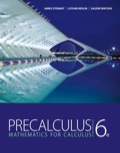
To calculate: The area of triangle ABC and show that it is a right triangle using the converse of Pythagoras theorem.
Answer to Problem 40E
The area of triangle ABC is
Explanation of Solution
Given information:
The vertices of the triangle ABC
Formula used:
Converse of Pythagoras theorem states that if the sum of squares of two sides of a triangle is equal to the square of longest side of the triangle, then the triangle is a right triangle.
Distance formula between two points
Area of a triangle is half into the product of its base and height. So, if b is the base and h is the height of the triangle, then area of triangle is expressed as,
Calculation:
Consider the given vertices of the triangle ABC
Recall that the distance formula between two points
So, length of AB will be calculated as.
Now, the length of BC will be calculated as,
Length of AC will be calculated s,
Now, calculate the sum of squares of AB and AC as,
Recall the converse of Pythagoras theorem if the sum of squares of two sides of a triangle is equal to the square of longest side of the triangle, then the triangle is a right triangle.
Here, square of longest side i.e. BC is equal to the sum of squares of other two sides, i.e. AB and AC, so, the given triangle ABC is a right triangle.
Thus, using converse of Pythagoras theorem it is proved that the triangle ABC is a right triangle.
Now, BC is hypotenuse and AB and AC are base and height of the triangle ABC.
Recall area of a triangle is half into the product of its base and height. So, if b is the base and h is the height of the triangle, then area of triangle is expressed as,
Apply it,
Thus, area of the triangle ABC is
Chapter 1 Solutions
EBK PRECALCULUS: MATHEMATICS FOR CALCUL